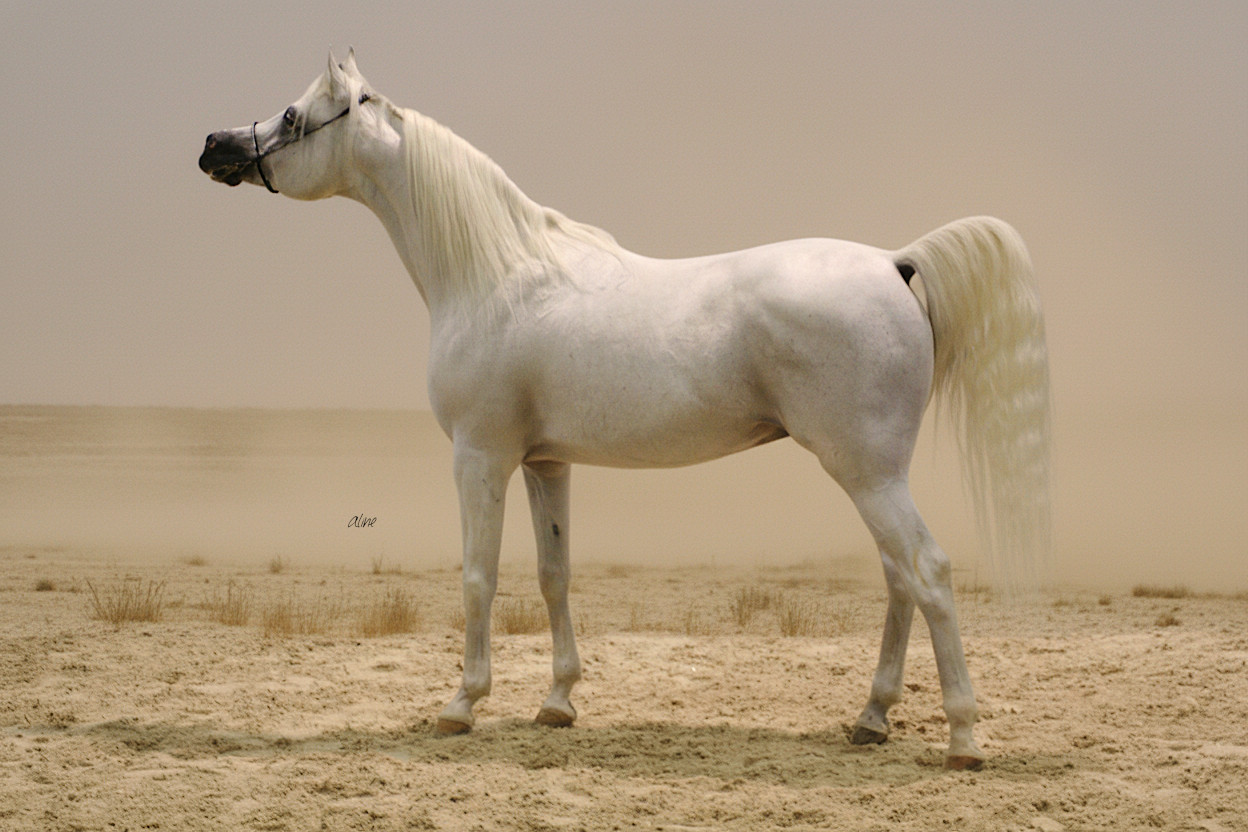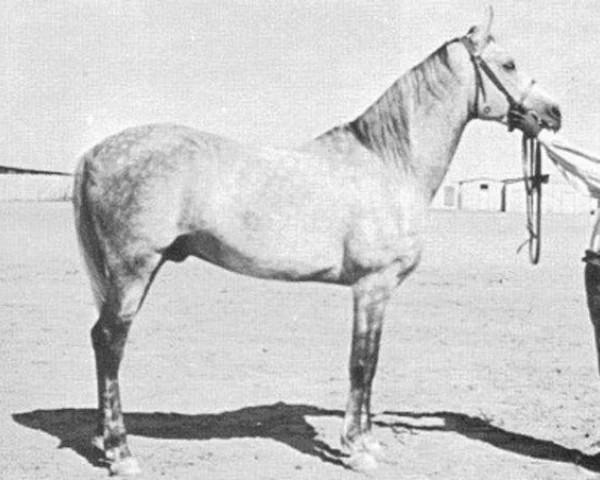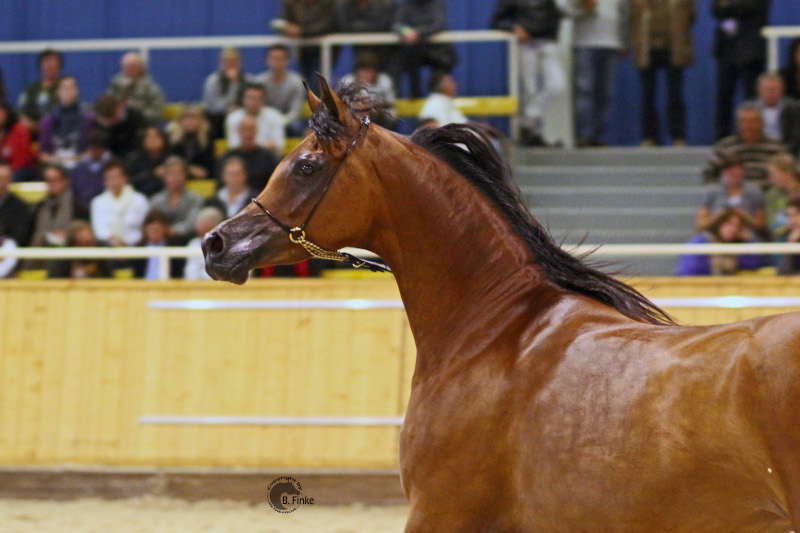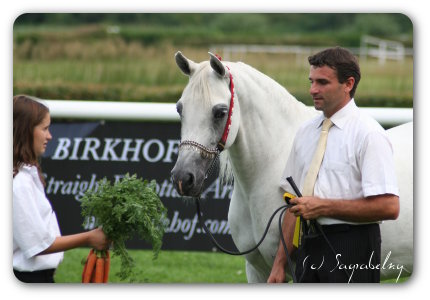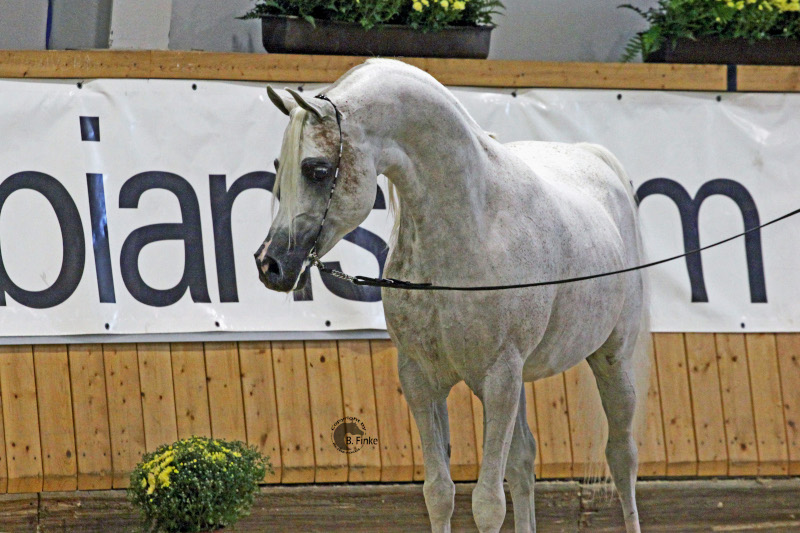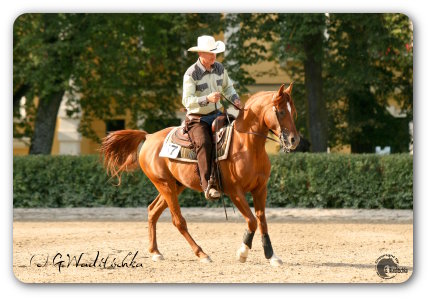Hadban Enzahi 
![]()
Among the most influential stallions to ever stand at Marbach State Stud, Hadban Enzahi brought the timeless elegance, strength, and nobility of the desert Arabian to the hills of Swabia. Foaled in 1952 in Egypt, this grey stallion by Nazeer out of Kamla was bred by the Egyptian Agricultural Organization at El Zahraa, a stud that had already begun capturing global attention for the refinement and authenticity of its Arabian breeding program.
Hadban Enzahi’s pedigree reads like a roll call of Egyptian Arabian royalty. His sire, Nazeer, was perhaps the most iconic stallion of 20th-century Egyptian breeding. Foaled in 1934, Nazeer was sired by Mansour and out of Bint Samiha, both bred at the Royal Agricultural Society. Nazeer was a stallion of tremendous prepotency—his offspring became the backbone of Egyptian Arabian breeding programs both at home and abroad. Known for producing horses of beauty, presence, balance, and a distinctly classic Arabian type, Nazeer remains a cornerstone in the pedigrees of countless champions.
Hadban Enzahi’s dam Kamla, a daughter of Sheikh el Arab out of Samha, came from similarly treasured lines. Kamla belonged to the Hadban Enzahi sire line through her damline, tracing back to foundational desert-bred stock. Her name, meaning 'perfect' in Arabic, suited her well—she transmitted elegance and strength to her son, anchoring him firmly in the traditions of Bedouin breeding values: utility, loyalty, and refinement.
In 1955, Hadban Enzahi was imported by the Marbach State Stud in Germany as part of a strategic revival of purebred Arabian bloodlines. He was selected by Landstallmeister Dr. Wenzler, who identified the colt’s exceptional conformation, expression, and noble bearing at El Zahraa. With him, the proud heritage of the Egyptian Arabian returned to a German program rooted in traditional fullblood breeding. His arrival marked a turning point—Marbach's Arabian program, once famed under the Weiler dynasty and home to sires such as Bairactar and Amurath, was in need of renewal.
Hadban Enzahi proved a sensation from the start. Visitors to Marbach were captivated by his desert flair—he quickly became a guest favorite and the stud’s figurehead.
Hadban Enzahi was a stallion of dry elegance and refined strength. A correct, well-laid shoulder, a deep chest, and strong coupling gave him both scope and utility. His dry head was classically Arabian: a finely straight profile, large expressive eyes, and an arched neck that rose gracefully from the withers. Though moderate in height, he impressed with his presence, fluid movement, and the harmony of proportions. During his active years from 1956 to 1975 he sired many influential sons and daughters. During that time the majority of Marbadh broodmares were his daughters. But he was also used for private breeding. In 1981 alone, he still had 17 licensed sons in private breeding programs.
Among his earliest and most treasured daughters was Sahmet (1957), out of the aged mare Jatta. She also produced two important stallions: Saher, who rose to become a chief sire at Marbach, and Sindbad, who contributed notably to private breeding programs.
His sons included a long list of elegant, typey stallions known for their Arabian expression and performance aptitude. Names such as Mali (x Malacha), full-brothers Mahomed and Malik (both out of Malikah), Mameluk (x Moheba II), Monrad (x Molawa), Nabil (x Nadja) and Sharaf (x Hathor) became familiar across Germany. Among them, Madkour I (x Moheba II) stood out as Hadban’s most influential sons. Madkour I was bred at Ismer Stud where he became chief sire and left the stallions Madkours Impuls and Mahadin who in turn where used on Marbach bred mares to continue the legacy of Hadban Enazhi.
Hadban’s daughters were no less significant. He sired mares such as Dagi, Darsi, Magda, Mahari, Maymoonah, Molesta, Shari, Damirah, and Sanacht, to name a few.
Damirah laid the foundation for a lasting legacy at Simeon Stud in Australia, becoming the matriarch of one of that country’s most celebrated Egyptian-related mare families.
Sanacht, acquired by the Loeber family of Plum Grove Stud in Illinois, became a cornerstone of their breeding. She produced a dynasty that included Amurath Baikal, Amurath Bakonur, Amurath Bandeira, Amurath Sandsniper, and many more—spreading Hadban Enzahi’s influence across North America.
His daughter Dschadaah (out of Hamdi) must be highlighted as his most notable daughter. She achieved a historic milestone as the first and only World Champion Mare bred at Marbach State Stud, a title that placed her—and her sire—firmly in the international spotlight.
Hadban Enzahi remained the pillar of Marbach's Arabian program throughout his life. He not only restored the program’s international standing but helped establish a distinctive German-Egyptian type. In later years, his influence was augmented through careful linebreeding and by using his paternal half-brother Ghazal producing outstanding mares such as Wega, Moheba II, Mamsahi and Shiwa; but also the stallion Darius (x Darsi) who became foundation stallion at Vidiko Arabian Stud in South Africa.
Hadban Enzahi's death on August 9, 1975, was widely mourned. He had become more than just a breeding stallion—he was the symbol of a reborn tradition, and of the bridge between old desert lines and modern European breeding.
Info
| grey stallion | |
| foaled: 1952-01-01 | died: 1975-07-22 |
| sire: NAZEER | sireline: Saklawi I (via Nazeer) |
| dam: KAMLA 1942 | damline: Venus db (branch: Bint Samiha) |
| strain: Hadban Enzahi | |
| additional information: aka Kamel; exported to Germany in November 1955 | |
| Breeder: King Farouk of Egypt Inshass Stud Egypt | |


